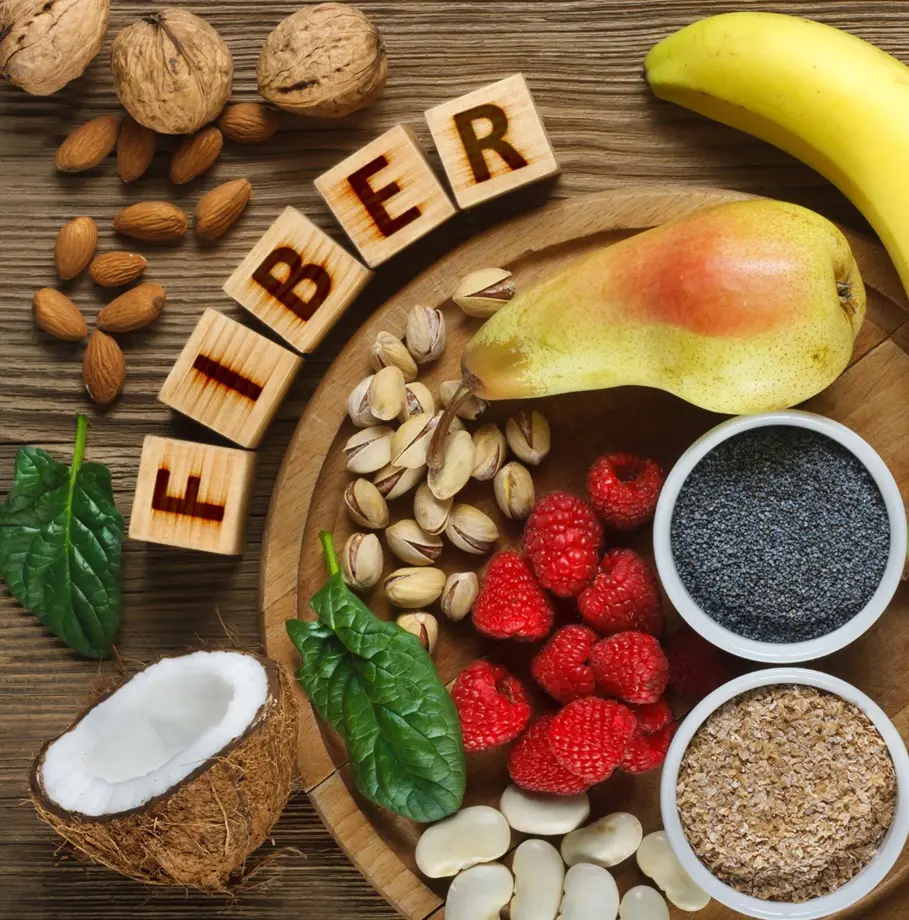Comfrey Plant Guide: How to Grow, Care And Benefits
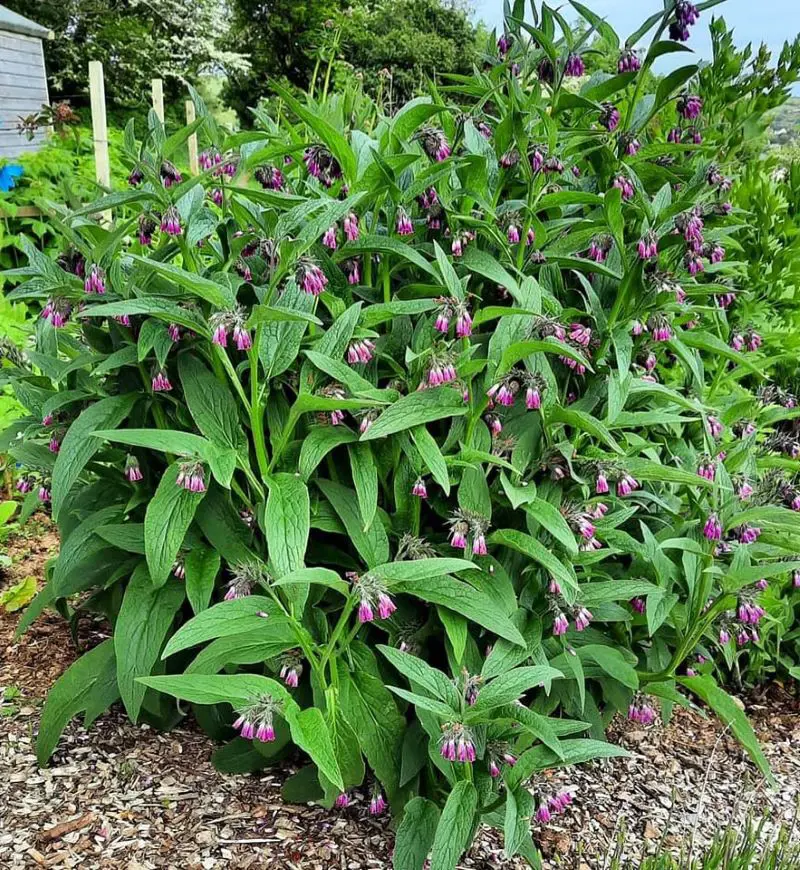
This post may contain affiliate links. If you make a purchase through links on our site, we may earn a commission.
The large-leafed plant with purple bell-shaped flowered comfrey has been drawing attention in gardens for centuries. This fine perennial is praised for its beauty and usefulness. That's why we can undoubtedly say that comfrey is one of those plants by which you get back all the efforts you have made while planting it. The best part is that it's simple to grow, helps improve soil quality, captivates helpful insects, and can even used as natural manure for other crops.
Thus, don't hesitate to add this plant to your garden! To help you, we have prepared this article that guides you on growing and caring comfrey-from planting the first roots to harvesting its nutrient-rich leaves.
What Is Comfrey?
Comfrey AKA Symphytum officinale is a perennial plant that has been used since ancient Roman times. Many people love to call it "knitbone" or "healing herb'" because of its medicinal benefits. This plant has tap roots that can go as deep as 10 feet into the soil and drag up nutrients from the ground that other plants cannot reach. These all things make it a great addition to any garden.
Similarly, comfrey leaves are covered in tiny hairs and look a bit larger than borage leaves. It also has bunches of purple, pink, or white flowers that hang down. The plant can grow quite usually between 3-5 feet and spreads about 2-3 feet wide. It's like having a gentle giant in your garden.
Types of Comfrey
You can find various varieties of comfrey, however, the most common ones include:
- Common Comfrey (Symphytum Officinale): This variety is well-liked for its health benefits and can grow in various types of soil.
- Russian Comfrey (Symphytum * uplandicum): This type of comfrey is a hybrid that can produce sterile seeds, so it's not as hard to control and is easier to take care of in your garden.
- Creeping Comfrey (Symphutum grandiflorum): This dwarf variety spreads quickly and can be used as ground cover.
How To Grow Comfrey from Seeds?
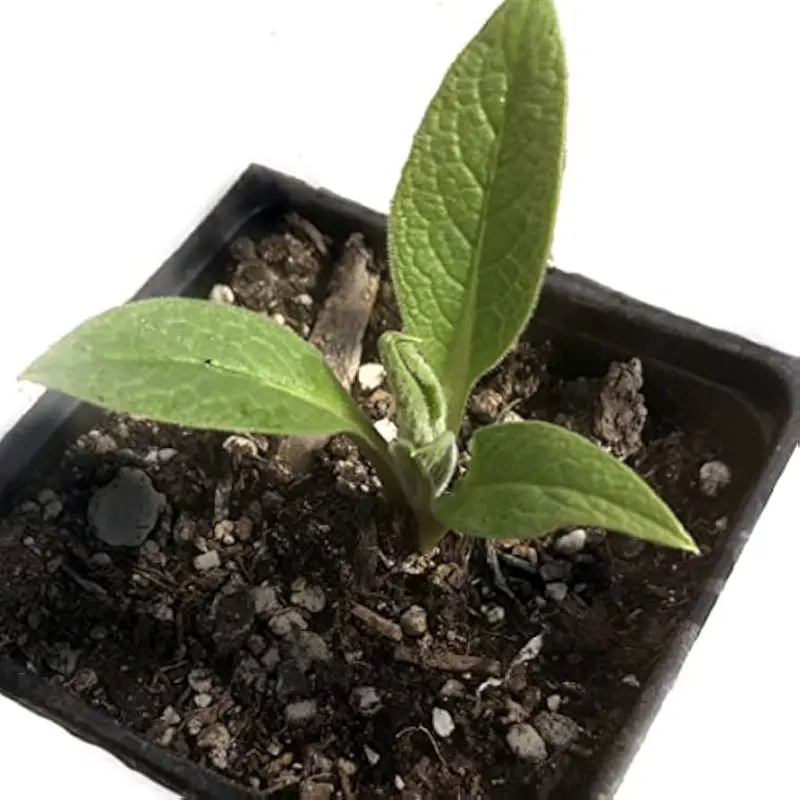
Let's begin with knowing about growing techniques from seeds. While some people find growing comfrey seeds a bit challenging at first, don't let that scare you! Once you know the right steps, it's actually quite fun and not as hard as you might think. Let me walk you through it.
1. Starting the Seeds (Late Winter/Early Spring)
- Fill small pots with seed-starting soil mix
- Place seeds on top of the soil (don't bury them-they need light to germinate)
- Very gently press them onto the surface
- Keep the soil moist but not soaking wet
- Place them somewhere warm (around 65-70 degrees F)
- Be patient! Seeds can take 2-4 weeks to sprout
2. Caring for Seedlings
- Once they sprout, give them plenty of light
- Water regularly but don't overdo it
- When they've grown a few leaves, move them to bigger pots
3. Moving Outdoors (After last frost)
- Choose a sunny or partly shady spot
- Dig holes about 2-3 feet apart (trust me, these plants get big)
- Add some compost to the soil
- Plant your seedlings at the same depth they were in their pots
- Water them well
Quick Tips:
- Don't plant too deep- comfrey hates that
- Keeps the area weed-free while plants are small
- Once established, they are super tough and need little care
- You might only get a few plants from seeds and that's normal
- Once comfrey is established, it's there to stay. The roots go deep and are hard to remove, so choose your planting spot carefully
How To Propagate Comfrey Plants?
Comfrey can be propagated using root cuttings, by divisions, and through stem cuttings. Here is a more detailed procedure that comes in handy for anyone who is trying to grow comfrey through correct propagation.
Preparation
- First, prepare your tools, sharp spade or knife for cutting
- Have pot ready if you plan to start cuttings in containers
1. From Root Cuttings
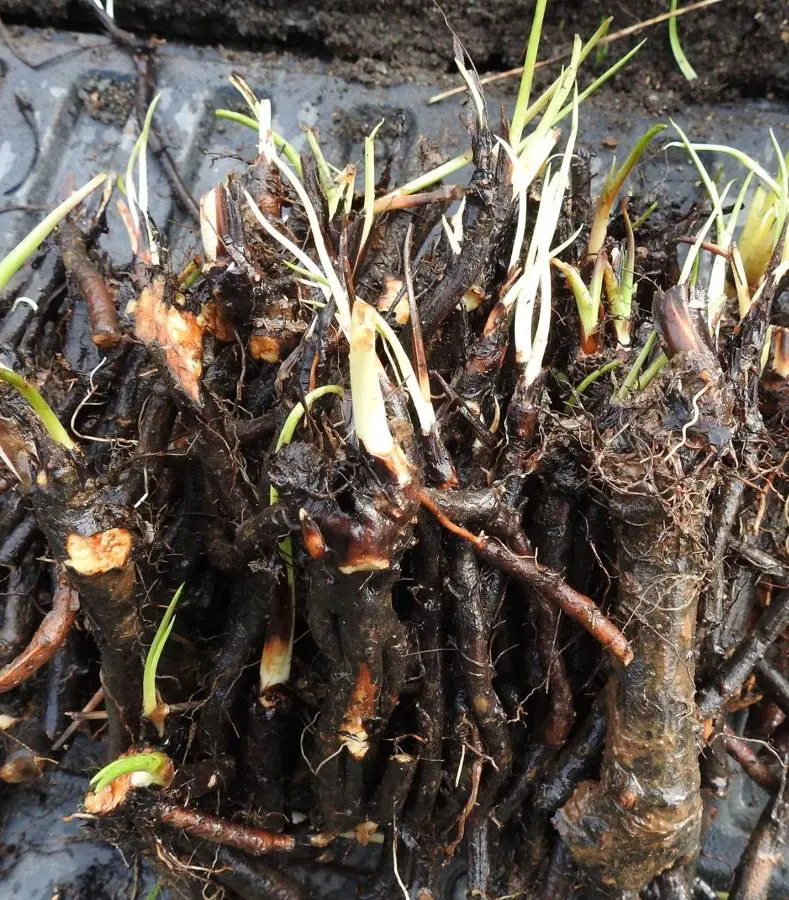
- Dig up a mature comfrey plant in spring or fall
- Cut the thick roots into 2-3 inch pieces (about the length of your thumb)
- Place these root pieces horizontally in well-drained soil, about 2-3 inches)
- Space them about 2-3 feet apart because as we mentioned comfrey gets big
- Keep the soil moist but not waterlogged
- Be patient, shoots will appear in 2-4 weeks
2. By Division
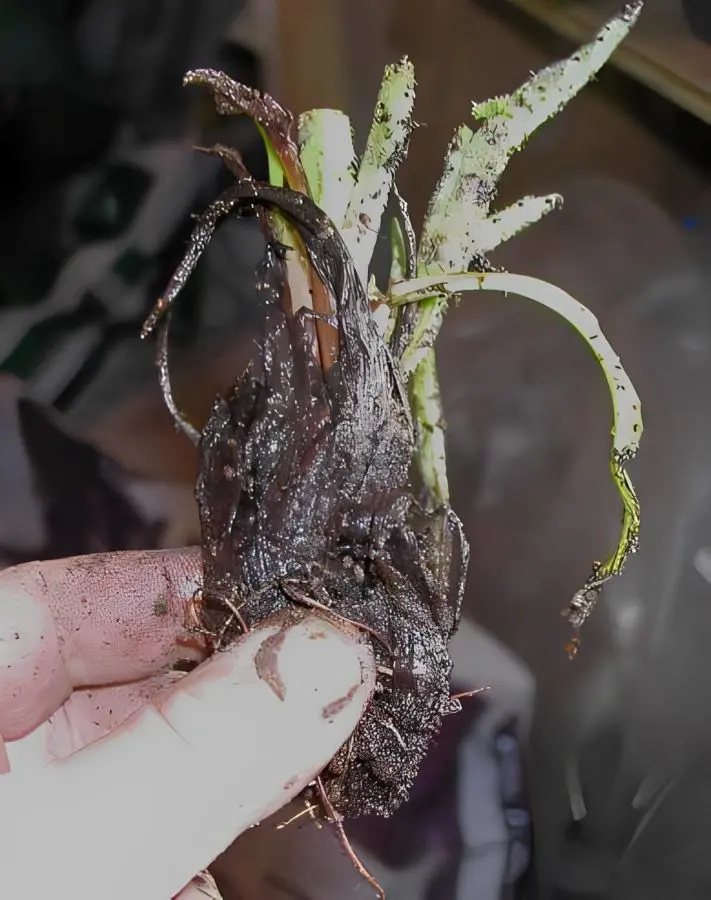
- Choose a healthy, mature plant in spring or fall
- Use a sharp spade to dig around and lift the whole plant
- Cut the crown (the part where stems meet roots) into sections
- Make sure each section has both roots and at least one bud
- Replant these divisions immediately at the same depth as before
- Water well and keep moist for the first few weeks
3. From Stem Cuttings
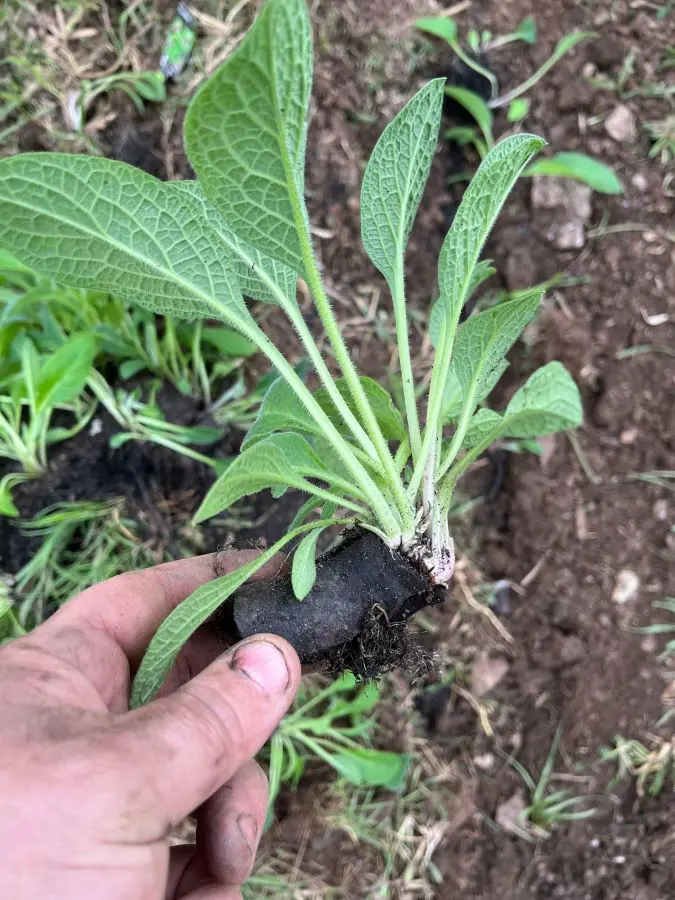
- Cut a few healthy stems at soil level in spring
- Remove lower leaves, leaving just the top few
- Dip the cut end in rooting hormone if you have it (optional)
- Stick them in pots filled with moist potting soil
- Please keep them in partial shade and well-watered
- Roots should develop in 3-4 weeks
Important Tips:
- Choose your planting spot wisely because comfrey is pretty much permanent once established
- The soil should be rich and well-drained
- Full sun or partial shade both work fine
- Keep an eye on watering for the first few weeks
- Once established, comfrey is tough as nails and needs little care
- Avoid planting comfrey where you may need to till the soil later, as it can spread vigorously
- Consider using pots for the initial propagation if you are concerned about managing its spread
Where And When To Plant Comfrey?
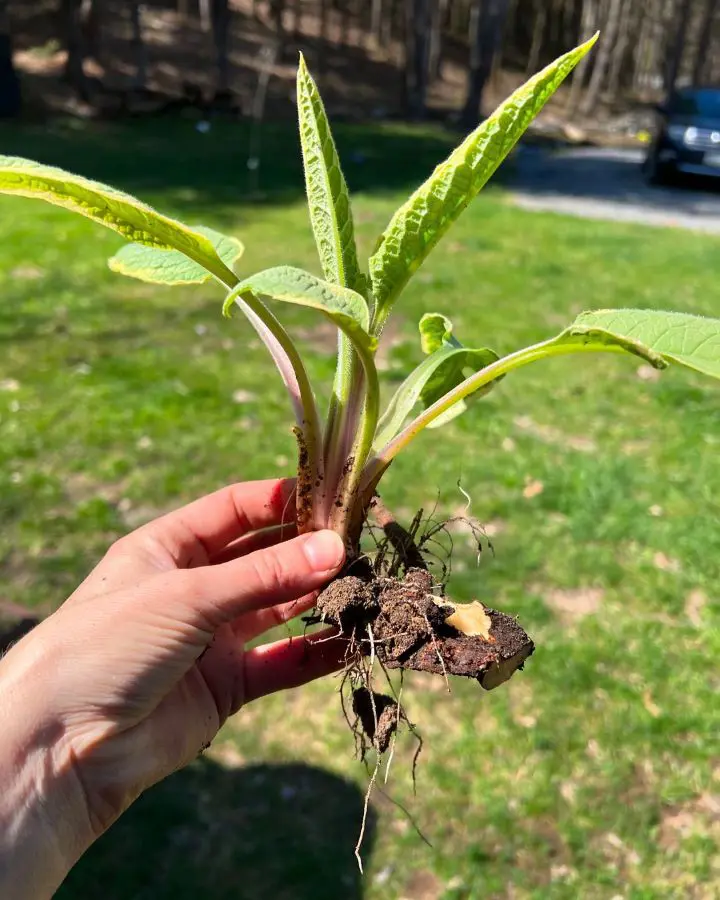
Understanding where and when to pant your comfrey perennials is vital, as it helps to grow them successfully. Here is a comprehensive guide that help will help to decide the perfect place and time. Let's get started:
When to Plant Comfrey?
- Spring (March to May): It is the right time to plant your comfrey. At this time, the soil is warm, the last frost is over, and the ground isn't too wet from winter. This can help the plants grow strong before they need to be cut next year.
- Fall (September): If you miss the spring window, early fall is the next best option. The soil remains warm enough for the plants to take root before winter dormancy sets in.
- Anytime during the growing season: Even though the best times to plant comfrey are in spring or fall, you can plant it during summer too. Just keep in mind that if you plant it in the hot summer months, your plants might need more time to get strong and settled in their new home.
Where to Plant?
Your comfrey will thrive in,
- Partial to full sun (at least 4-6 hours daily)
- Areas with good drainage
- Spots protected from strong winds
- Places where it can grow undisturbed for years
- Leave 2-3 feet between plants
- Keep 4 feet from other permanent plantings
- Plant away from vegetable beds (comfrey's deep roots can compete)
Soil Conditions
Comfrey isn't picky but loves:
- A rich, well-draining soil
- Slightly acidic to neutral pH (6.0-7.0)
- Deep soil (roots can reach 6-10 feet)
- Added organic matter or compost
Strategic Planting Locations
Consider planting comfrey:
- Near fruit trees as a nutrient accumulator
- Along fence lines as a barrier
- In dedicated herb gardens
- At the edge of your property
- In areas needing erosion control
Places to Avoid
Don't plant comfrey:
- In frequently trilled areas
- Near shallow-rooted plants
- Where you might want to remove it later (it's very persistent)
- In boggy or waterlogged spots
- Too close to foundations or pipes
Common Mistakes To Avoid
- As we already discussed, starting in the wrong spot is one of the biggest mistakes because once comfrey takes root, it's there to stay. So, don't plant it without carefully choosing your spot.
- Keep it away from paths and walkways as it grows quite big
- Don't plant during the peak of summer- the young plants can get stressed
- Avoid planting during winter frost because young plants are vulnerable
- Likewise, don't crowd your plants. They need about 3 feet between each other
- Never plant too shallow, those roots need to go deep
- Avoid planting in waterlogged soil, as they like good drainage
- Avoid cutting all the leaves at once when harvesting
- Don't let it flower and go to seed unless you want it spreading everywhere
- Never skip soil preparation. They love rich, well-dug soil
- Don't plant in very sandy or clay-heavy soil without improving it first
- Avoid spots where water pools after rain
- Try to sidestep too much afternoon sun
Caring And Harvesting Comfrey Plant
Comfrey is a hardy perennial plant that blooms with minimal care. This doesn't mean ignoring your plant after planting it, minimal but proper care is required. Thus, let's have a look at how you can care for them:
- After planting them water your comfrey regularly, especially during the first few weeks, as it helps to establish roots. Once established, it is drought-tolerant due to its deep taproot but will benefit from occasional watering during dry periods.
- While in the context of fertilizing, it is a nutrient accumulator and can thrive in less fertile soils, however, adding mature compost in spring can enhance growth and yield.
- Likewise, regularly prune your comfrey. It encourages bushy growth and prevents it from becoming too invasive. Plus, cutting back stems after flowering helps maintain plant health. Remove dead leaves in the fall for tidiness.
- Watch for fungal diseases like rust or powdery mildew. If you see any of these remove infected leaves immediately and dispose of them properly.
Harvesting Comfrey
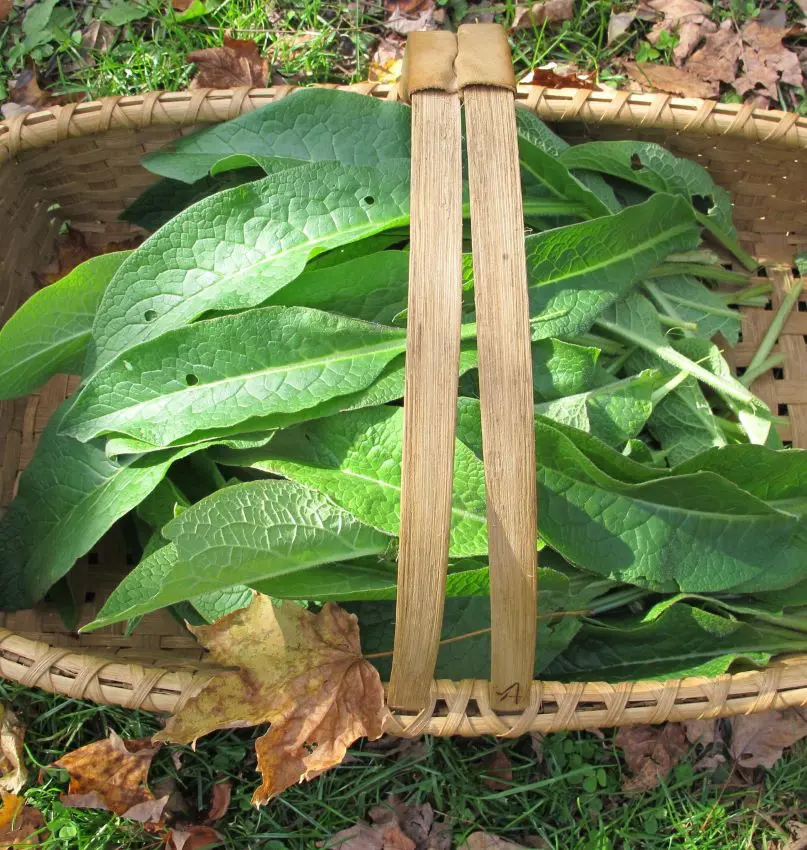
The wonderful thing is you can harvest comfrey multiple times throughout the growing season, however, prefer to harvest it in late spring to early autumn.
1. When to Harvest
- Harvest when the plants are about 2 feet tall, usually starting in late April or early May.
- The best time for your last harvest is early to mid-September before the first hard frost.
2. How to Harvest
- Tools needed: Use sharp secateurs or garden shears for clean cuts.
- Cutting technique: Cut stems close to the base of the plant, leaving about 2 inches above the soil level to avoid damaging new growth.
- Leave some growth: Always leave some younger leaves on the plant to continue photosynthesis and support regrowth.
Tips for Harvesting
- If you wanna help pollinators such as bees, leave some plants to flower while harvesting.
- For safety, wear gloves while handling comfrey because its leaves consist of tiny hairs that can irritate the skin.
Benefits And Uses Of Comfrey
Comfrey has been used for a long time due to its healing qualities. However, care should be taken especially since some varieties contain dangerously toxic substances called pyrrolizidine alkaloids (PA).
- Wound Healing: Traditionally, it has been used to treat all forms of injury, bruises, and broken bones. The plant contains a substance called allantoin, which is believed to help cells grow and repair damaged tissues.
- Anti-inflammatory Effects: Topical applications of comfrey have shown effectiveness in reducing inflammation and pain associated with conditions like arthritis and gout.
- Digestive Health: Historically, comfrey has been used to treat digestive issues such as ulcers, diarrhea, and upset stomach. However, internal use is now discouraged due to safety concerns.
- Respiratory Relief: Comfrey has been used for treating bronchial problems, coughs, and chest congestion. It can be applied as a gargle for sore throats and gum disease.
Uses of Comfrey

Comfrey can be found in various forms and applications, primarily for topical use due to safety concerns regarding ingestion.
1. Topical Applications
- Comfrey extracts are commonly included in creams and ointments for treating skin conditions, joint pain, and muscle injuries. Products with low PA content are preferred for safety.
- Fresh comfrey leaves can be crushed and applied directly to wounds or sprains to promote healing and reduce pain.
2. Herbal Preparations
While historically used as a tea for various ailments, internal consumption of comfrey is not recommended today due to the risk of liver damage from PAs.
3. Gardening Uses
- The leaves of this plant are rich in nutrients and used in gardens as organic manure or as mulch. They assist in increasing soil productivity by putting nutrients into the soil.
- This plant has also been eaten as fodder for livestock because of its high nutritive value.
4. Biodiversity Support
Because of its ability to attract various pollinators, the addition of comfrey in your garden is very beneficial.
Recent posts
Lifestyle
Lifestyle
How Much Omega-3 Per Day Is The Right Amount?
Omega-3 fatty acids are advantageous for so many aspects of health-from heart, brain to joints. So, "How much to add" can be a general query of many. To help you get through this, and to let you know the appropriate amounts needed depending on the ag...
Lifestyle
How Much Protein Should You Consume In a Day?
Protein is one of the macronutrients that are essential in the human body for tissue building, repair, immunity and hormonal balance. The Recommended Daily Allowance or RDA covers a daily protein allowance of 0.8 grams per kilogram of body weight wh...
Lifestyle
How To Fillet A Fish?
Nothing beats the deep happiness of filleting your own fish, but only if you have done it before. While beginners might find it challenging at first, the process becomes easier with the right guidance. Whether you are filleting with a fresh catch or ...
Lifestyle
How Much Fiber Do You Need On Your Diet?
Fibers are what keep our digestive system healthy. Many of us have heard the buzz about how fibers are important and how they keep "things moving", making these nutrients our gut friends. If after knowing all the basics, the amount of fiber to be add...
Lifestyle
Is Apple Cider Vinegar Good For Weight Loss? How To Use
Shedding those extra pounds is a tough task for all. And for individuals in this journey, looking for trends that have gained significant traction is not a new thing. One such trend that has caught the attention of many is the use of apple cider vine...
Lifestyle
How to Digest Food Faster? 11 Natural Ways To Improve
As we have stepped into the world of a more sedentary lifestyle, all of us are more prone to physiological disorders. One of the consequences of not getting exposed to proper exercise is a delay in the digestion rate. For people who are on desk jobs,...



